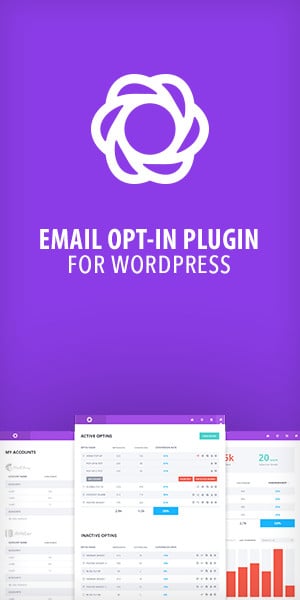Market research vs competitor analysis is a crucial distinction that can significantly impact business strategy, with 77% of marketers acknowledging improved decision-making through thorough market evaluations. This article dissects the fundamental differences, helping businesses understand how market research focuses on consumer needs, preferences, and trends, whereas competitor analysis zeroes in on rivals’ strategies, strengths, and weaknesses. Dive in to uncover how mastering both can give your business a competitive edge and foster informed strategic planning.
Understanding Market Research
Market research plays an integral role in business strategy. This section explores its core aspects, from defining its purpose to understanding its critical importance for business growth. Dive into the various methods used and uncover why businesses can’t afford to skip this step.
Definition and Purpose of Market Research
Market research refers to the process of gathering, analyzing, and interpreting data about a market, product, or service. It helps businesses understand consumer needs, preferences, and behaviors. The primary purpose is to inform decision-making, minimize risks, and identify opportunities. Companies use market research to tailor their strategies and ensure they align with customer expectations.
Understanding the market landscape is essential. It allows businesses to pinpoint target demographics and forecast future trends. Market research bridges the gap between company offerings and consumer demands, enabling more effective marketing strategies. This proactive approach leads to better product development, pricing strategies, and promotional tactics.
Types of Market Research Methods
There are several methods to conduct market research, each with unique advantages. The two main categories are primary and secondary research. Primary research involves collecting new data directly from sources, such as customer surveys, focus groups, and interviews. It offers firsthand insights into consumer behavior and preferences.
- Surveys: Ideal for gathering quantitative data from a large audience.
- Focus Groups: Provide in-depth qualitative insights through group discussions.
- Interviews: One-on-one conversations that reveal detailed personal perspectives.
Secondary research relies on existing data, which can be found in reports, studies, and competitors’ performance analysis. It’s cost-effective and provides a broader market context. Combining both types allows businesses to create a well-rounded understanding of their market.
Importance of Market Research for Business Growth
Market research is a catalyst for business growth. It provides the insights needed to navigate competitive landscapes and make informed decisions. By understanding consumer needs, businesses can create products that fulfill market demands, leading to increased customer satisfaction and loyalty.
Moreover, market research helps identify potential risks and opportunities, enabling businesses to pivot strategies before challenges arise. This foresight reduces costly errors and enhances operational efficiency. When companies understand their market, they can allocate resources more effectively and optimize marketing efforts, driving growth and profitability.
Exploring Competitor Analysis
Competitive analysis is another cornerstone of strategic business planning. This section delves into what it means, the techniques used, and the benefits it offers. Gain insights into how understanding your competition can sharpen your business edge.
What is Competitor Analysis?
Competitor analysis involves evaluating your business rivals to understand their strengths, weaknesses, strategies, and market position. It’s about recognizing who your competitors are and assessing how they operate. The goal is to identify gaps in the market and find opportunities to outperform them.
Through competitor analysis, businesses can gauge the competitive landscape and anticipate market shifts. It provides a benchmark against which companies can measure their performance. Knowing what your competitors are doing helps tailor your strategies to meet or exceed industry standards.
Techniques for Conducting Competitor Analysis
Conducting a thorough competitor analysis requires a strategic approach. Here are some effective techniques:
- SWOT Analysis: Evaluates competitors’ strengths, weaknesses, opportunities, and threats.
- Benchmarking: Compares competitor performance metrics to industry standards.
- Market Positioning: Maps competitor products in terms of price and quality.
Utilizing these techniques helps uncover competitors’ strategies, product offerings, pricing models, and customer reviews. This information is crucial for developing strategies that leverage your unique advantages to capture market share.
Benefits of Competitor Analysis in Strategic Planning
Competitor analysis offers several benefits that enhance strategic planning. It provides insights into market trends and consumer preferences, enabling businesses to stay ahead. This analysis guides product development and marketing strategies, ensuring they resonate with target audiences.
Moreover, understanding competitors’ weaknesses allows companies to exploit gaps in the market. It fosters innovation by encouraging businesses to differentiate their offerings. Competitor analysis also helps in risk management by preparing companies for potential challenges and competitive threats.
Market Research vs. Competitor Analysis: Key Differences
Market research and competitor analysis are both essential but serve distinct purposes. This section highlights their differences, focusing on objectives, data sources, and how they complement each other in creating comprehensive business strategies.
Objectives and Focus: Comparing Market Research and Competitor Analysis
Though market research and competitor analysis may seem similar, they have different objectives. Market research focuses on understanding consumer needs and market conditions. It aims to identify trends, preferences, and potential areas for growth. This helps businesses align their offerings with market expectations.
On the other hand, competitor analysis centers on understanding rivals’ actions. It evaluates competitors’ strategies, helping businesses determine their position in the competitive landscape. This analysis allows for strategic positioning and helps uncover opportunities to differentiate from competitors.
Data Sources: How They Differ in Information Gathering
Market research and competitor analysis rely on distinct data sources. Market research gathers information directly from potential and existing customers through surveys, focus groups, and interviews. It also uses secondary data from industry reports and market studies.
Competitor analysis, however, focuses on publicly available data about rival companies. This includes financial reports, marketing materials, product reviews, and social media activity. Such data provides insights into competitors’ strengths and market positioning.
How Market Research and Competitor Analysis Complement Each Other
Combining market research and competitor analysis offers a holistic view of the business environment. Market research provides the consumer perspective, highlighting needs and desires. Competitor analysis reveals gaps and opportunities for differentiation.
Together, they create a robust strategic foundation. Businesses can design offerings that meet consumer expectations while distinguishing themselves from competitors. This synergy enhances decision-making, risk management, and overall competitive advantage.
Conclusion
Market research involves collecting data about market trends, customer preferences, and potential growth opportunities to inform business decisions. It uses various methods such as surveys, focus groups, and observations to gather insights. Competitor analysis focuses on understanding competitors’ strategies, strengths, and weaknesses to enhance strategic planning. Techniques for competitor analysis include SWOT analysis, benchmarking, and tracking competitors’ online presence. While market research and competitor analysis serve different objectives, they complement each other by providing comprehensive insights into both customer needs and competitive landscapes.
FAQ
What is the primary difference between market research and competitor analysis?
Market research focuses on understanding consumer behaviors and preferences within a market, while competitor analysis examines the strengths and weaknesses of current and potential rivals. Both are essential for strategic planning but serve distinct purposes.
How does competitor analysis enhance business strategy?
Competitor analysis provides insights into competitors’ strategies, revealing opportunities and threats. This knowledge enables businesses to refine their strategies, improve competitive advantage, and align with market demands effectively.
Which tools are most effective for conducting market research?
Effective tools for market research include Google Analytics, SurveyMonkey, and SEMrush. These tools provide valuable data on consumer behavior, market trends, and industry benchmarks, empowering businesses to make informed decisions.
Why is competitor analysis crucial for understanding market trends?
Competitor analysis helps identify emerging trends by observing how competitors adapt to market changes. Understanding these shifts enables businesses to anticipate market needs and innovate accordingly.
How can market research help in identifying customer needs?
Market research uncovers customer preferences, pain points, and buying patterns through surveys, focus groups, and data analysis. This information guides product development and marketing strategies, ensuring they meet customer expectations.
What are common mistakes businesses make in competitor analysis?
Common mistakes include underestimating competitors, relying on outdated data, and ignoring indirect competitors. A thorough and ongoing analysis is vital for capturing accurate insights and maintaining a competitive edge.




